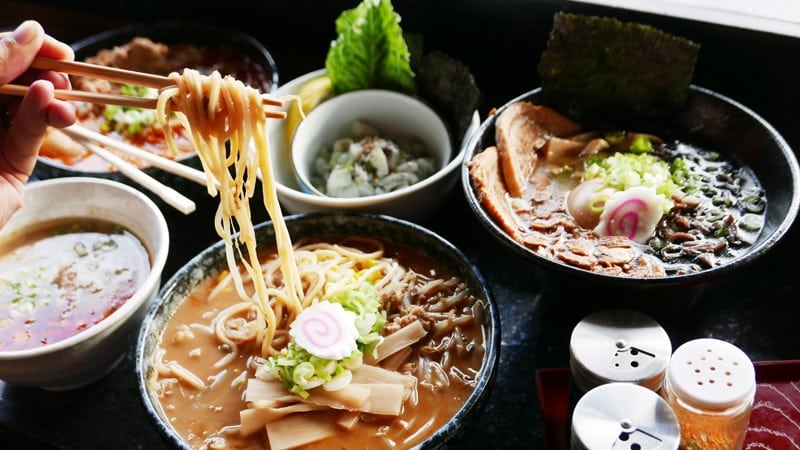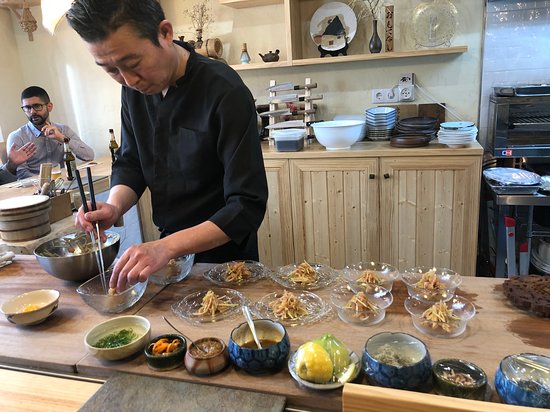Japanese cuisine is one of the richest in history and culture. It also features a wide variety of foods ranging from rice, vegetables and meat to the sweetest and most delicious sauces. Ingredients whose combination has given rise to a long list of dishes with many years of tradition that fuse all kinds of textures and flavours.
But are the dishes of yesteryear still the most popular today? Here is a selection of the gastronomic treasures that best represent Japan’s traditional cuisine and are still popular all over the world.
Sushi
Let’s start with sushi! In the past, the word sushi referred to fish preserved in vinegar, but nowadays this star dish is associated with different ways of presenting rice, which is pre-treated in vinegar and topped with salmon, avocado, tuna, octopus, eel, seaweed or roe.
However, there are an infinite number of sushi options and it can sometimes be difficult to differentiate between them. The secret is in the preparation. So, for example, nigiri is the classic rice ball with the fish ingredient on top, norimaki is a roll of rice wrapped in seaweed and stuffed inside, or temaki, one of the most outstanding, is a cone-shaped seaweed that envelops the rice, vegetables and fish.
Sashimi
Unlike sushi, sashimi consists of seafood, meat and other foods filleted and served raw, but without rice. They are often presented on a bed of vegetables or with other types of fish. The most popular sashimi are tuna, salmon, sea bream, mackerel, bonito, shrimp or squid.
The dish is served with a small bowl of soy sauce and depending on the type of sashimi, wasabi and ginger may be added in small quantities.
Ramen
Japanese cuisine also takes food from other countries, such as ramen, which originated in China and has become popular in Japan. What does it consist of? It is presented in a bowl and broth is added as a base, noodles and the main ingredient, which can be pork, chicken, beef, fish or vegetables.
Depending on the type of ramen, it will have one base or another. The best known are: shoyu, a broth flavoured with soy sauce; shio, a light broth with salt; the characteristic miso, a thick miso soup made with soybean paste; or tonkotsu, a broth made with pork bones.
Tempura
Although tempura may seem like a contemporary recipe, its origins date back to the 16th century, when it was introduced to Japan by the Portuguese. It has become a very popular dish and is cooked in many restaurants.
The tempura is a type of batter that uses special tempura flour and is cooked under a special rice oil for better cooking. It is usually battered with prawns, fish, mushrooms, vegetables, etc. and is served as a main dish or with a side of rice.
Udon
Udon noodles are thicker than the rest, while soba noodles are white, thin and with a different texture, or yakisoba noodles, which are more similar to noodles and fried. However, udon noodles are made with wheat flour and are prepared for hot or cold dishes, accompanied by tempura, curry broth, vegetable broth and other varieties of seasonings and sauces.
Japanese curry
Japanese curry, introduced in the Meiji era, has a sauce with a thicker texture and sweeter taste than Indian curry, characteristically spicy, but featuring the basic spices. The meat used is usually pork or beef and the ingredients include potatoes, onions and carrots.
Gyoza
Gyoza, originally from China, is cooked boiled or fried in the form of a dumpling. The dough is thin and filled with chopped meat and vegetables. The typical filling consists of pork, chives, green onions, lettuce, ginger, garlic, soy sauce and sesame oil. However, there are also other varieties.
Yakitori
Yakitori are grilled chicken skewers, cooked over charcoal and served with an alcoholic beverage such as beer. It is common to find this dish at food stalls at festivals. The best ones, though, are served in speciality restaurants.
Matcha tea
Green tea is one of the most popular teas in Japan. It is a central element in the tea ceremony, which is prepared in a ritual with the fundamental principles of Zen. Matcha tea, which is a powdered green tea, uses only the best quality leaves, dried and pressed to a fine powder to which hot water is added.
Mochi
Mochi cake, made with mochigome glutinous rice, is one of the most popular desserts in Japanese culture, served mainly on religious holidays.
It is made slowly by pounding the boiled rice into a thick dough and then rolling it into small circular shapes. Finally, it can be filled with an ingredient such as fruit or ice cream.
In our online shop you will find most of them or ingredients to make and accompany them.





